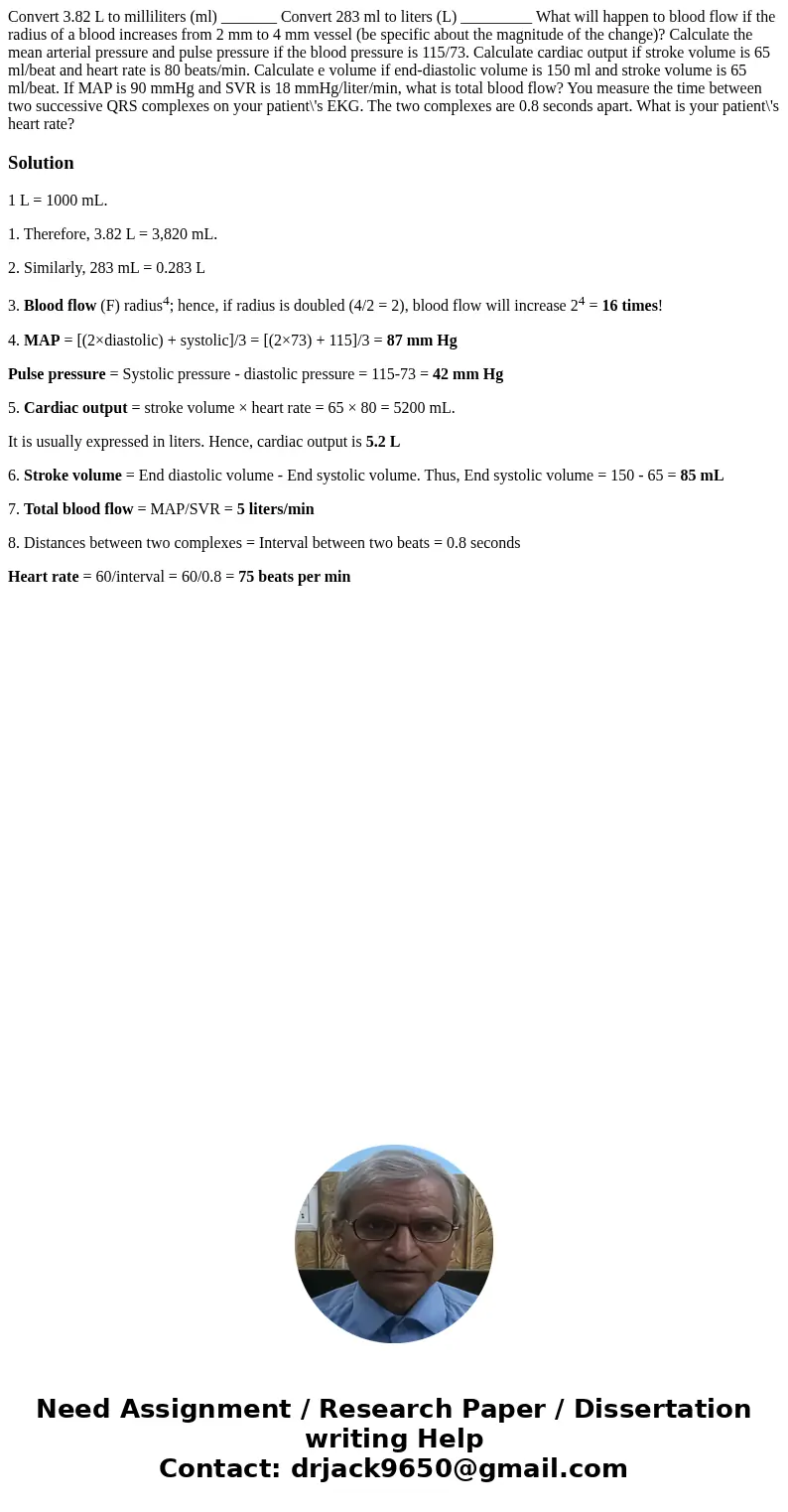Convert 382 L to milliliters ml Convert 283 ml to liters L
Convert 3.82 L to milliliters (ml) _______ Convert 283 ml to liters (L) _________ What will happen to blood flow if the radius of a blood increases from 2 mm to 4 mm vessel (be specific about the magnitude of the change)? Calculate the mean arterial pressure and pulse pressure if the blood pressure is 115/73. Calculate cardiac output if stroke volume is 65 ml/beat and heart rate is 80 beats/min. Calculate e volume if end-diastolic volume is 150 ml and stroke volume is 65 ml/beat. If MAP is 90 mmHg and SVR is 18 mmHg/liter/min, what is total blood flow? You measure the time between two successive QRS complexes on your patient\'s EKG. The two complexes are 0.8 seconds apart. What is your patient\'s heart rate?
Solution
1 L = 1000 mL.
1. Therefore, 3.82 L = 3,820 mL.
2. Similarly, 283 mL = 0.283 L
3. Blood flow (F) radius4; hence, if radius is doubled (4/2 = 2), blood flow will increase 24 = 16 times!
4. MAP = [(2×diastolic) + systolic]/3 = [(2×73) + 115]/3 = 87 mm Hg
Pulse pressure = Systolic pressure - diastolic pressure = 115-73 = 42 mm Hg
5. Cardiac output = stroke volume × heart rate = 65 × 80 = 5200 mL.
It is usually expressed in liters. Hence, cardiac output is 5.2 L
6. Stroke volume = End diastolic volume - End systolic volume. Thus, End systolic volume = 150 - 65 = 85 mL
7. Total blood flow = MAP/SVR = 5 liters/min
8. Distances between two complexes = Interval between two beats = 0.8 seconds
Heart rate = 60/interval = 60/0.8 = 75 beats per min

 Homework Sourse
Homework Sourse